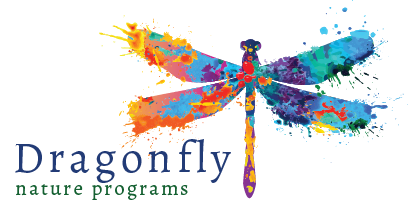Not every encounter with wildlife in my yard is a positive one. I think people, those who aren’t accustomed to spending time outdoors, get caught up in the what ifs of an outdoor lifestyle. What if I get stung by a bee? What if I get bug bites? What if there’s a snake? What if I get poison ivy?
But the benefits of outdoor exploration and relaxation far outweigh the potential threats. And knowledge is power. I don’t worry about bees and snakes because I know they aren’t aggressive. I wear clothes to prevent bug bites, and I can identify poison ivy.
And that’s where my summer started this year. Identifying the multiple 20+ foot vines growing in the hedge row that my neighbors own. After a year of neglect of the living fence between our yards, something had to be done. I am the neighbor with children and pets that play outside, so I took it upon myself to remove the poison ivy.
During the summer months, poison ivy is very robust and spraying it has less effect than other times of year. And I am a very limited user of herbicides anyway. Despite the heat and humidity of late June in NC, I put on full pants, long sleeves, long socks, old shoes, old gloves and a hat, grabbed my shears and a shovel. The poison ivy had to go.
I thought I had a reasonable grip on the situation until a day later. The rash began on the soft part of my wrists. I hadn’t realized the sleeves of my long sleeve shirt weren’t staying put but instead crept up my forearm, exposing this small area of skin. I was okay with the degree of infection until it worsened. I know a poison ivy rash doesn’t spread (this wasn’t my first rodeo) but it behaves like it does. About 4 days later I got a wicked rash on my lower right leg. I must have had oil on my pants and despite my efforts to de-robe meticulously and put all my clothes directly into a hot wash, the urushiol oils of this plant are potent! I dealt with the itchy, uncomfortable rash for the next three weeks.
So, maybe my life would be better spent watching more Netflix and spending less times out of doors! NAH! I never feel as relaxed and happy and whole after binge watching TV as I do outside. And this experience got me thinking. What is the value of poison ivy anyway?
The Ecological Benefits of Poison Ivy
In short, it’s edible. NOT BY HUMANS, STOP, DON’T EAT POISON IVY! A few different moth caterpillars rely on poison ivy leaves for food. They themselves often end up as food for hunting birds. Migrating birds rely on the berries poison ivy produces in the fall and winter months. In the spring, small bees and some flies pollinate the greenish-white flowers of the ivy, exchanging pollen transfer for food.
Animals are the primary method of the ivy’s dispersal. Animals eat the berries, move along and disperse the seeds in their scat. Poison ivy prefers the edges of woodlands, where it gets some sun and some shade, which makes my neighbors hedgerow the perfect location for it to thrive!
Honestly, poison ivy is a beautiful plant with leaves ranging in color from red in the spring, to deep green in summer, to the fall colors of yellows and oranges associated with deciduous flowering plants. It’s flowers are small, greenish-white with 5 petals that produce the berries that hold the seeds that are ingested and spread to grow more bushes or vines.
Poison ivy serves it’s role in the ecosystem by providing shelter and food to wildlife; all plants produce oxygen and remove carbon dioxide and play a role in the prevention of soil erosion. And because of its beauty and its purpose, I can’t hate the stuff. But next time I’ll do a better job of covering up!
Leaves of Three Let it Be
Well, leaflets actually. In the eastern part of our country, poison ivy mostly grows as a vine that can grow up to one hundred feet long, with small, wiry, aerial roots designed to grip surfaces. In the western US, poison ivy is often a shrub. Either way, it forms compound leaves, which means those “leaves of three” referred to in the rhyme, written to help you remember to stay away from the stuff, is actually “leaflets of three”. The middle leaflet is the largest and extends beyond the other two. It will have jagged margins or edges along both sides of the leaf. The two side leaflets look like backwards mittens, with the “thumb” or outer lobe, extending on the leaf’s margin, away from the middle leaflet. Colors can range by season, but almost always, there is red on the stem, especially at the point where the leaflets branch. Each leaf, or set of 3 leaflets, alternates branching. See the photo above to see how each leaflet’s stem branches off of the main stem in opposite directions at regular intervals.
There are other plants that resemble poison ivy, but if you have any concern, just stay back. Better to be safe, than itchy!




